Brady v Reynolds - the North American dream in English football's third tier
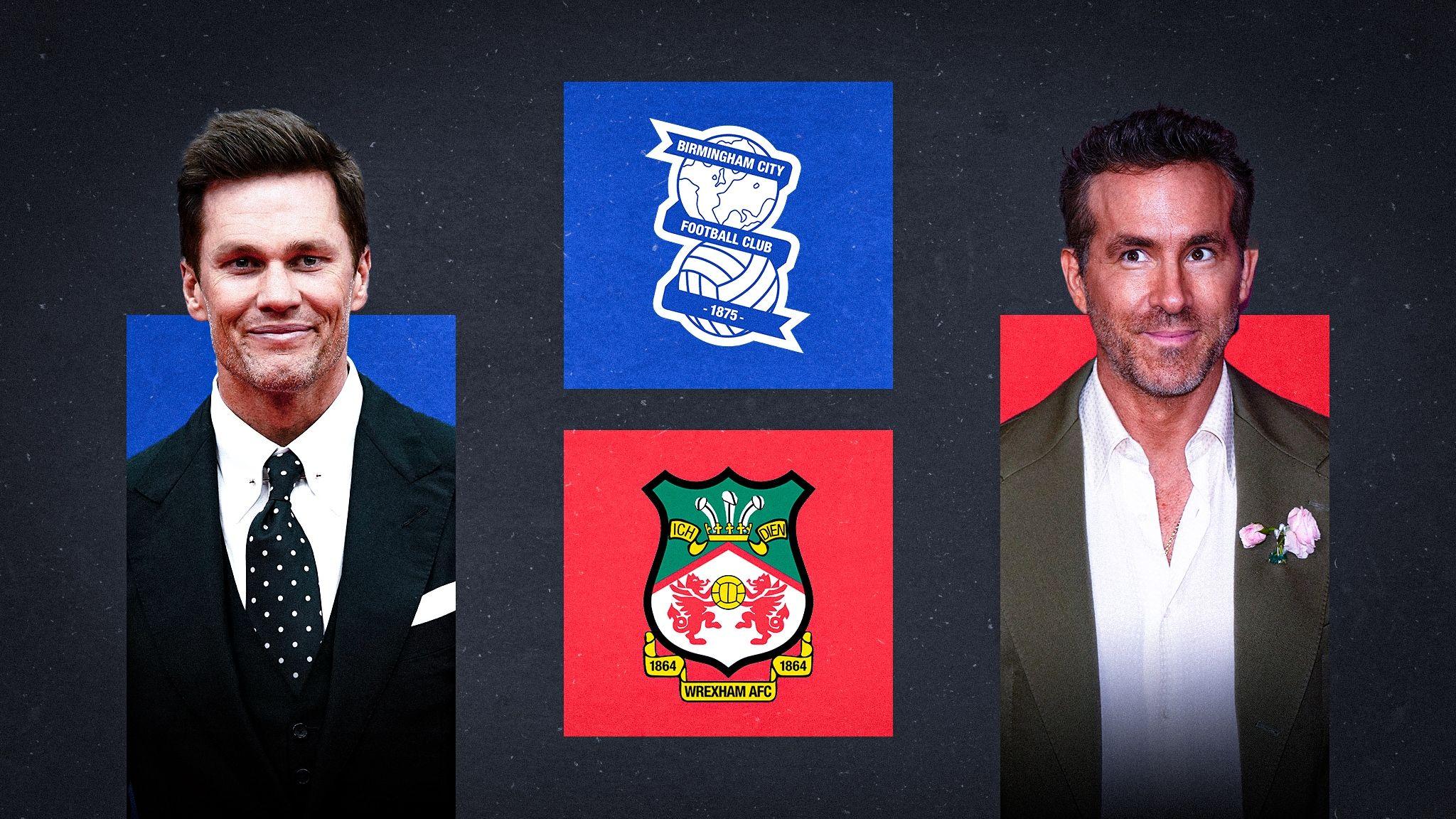
- Published
In the red corner, Ryan Reynolds and Hollywood profile. In the blue, American football great Tom Brady and a billion dollar wealth fund.
This is not League One as we know it.
Regardless of the fact neither the Deadpool star nor the NFL's greatest is expected at St Andrew's for Wrexham's visit to Birmingham City on Monday night, it has not stopped the spotlight shining on the intertwining of the two unlikeliest ownership stories seen in English football’s third tier.
Of course there is a genuine on-the-pitch intrigue of what will happen when newly promoted Wrexham, with their unbeaten start, head to the pre-season promotion favourites looking for an immediate return to the Championship.
Or, to paraphrase Rotherham United’s Steve Evans, the Real Madrid of League One against the Harlem Globetrotters.
But the match in front of a sell-out crowd of close to 30,000 is one thing; the curiosity lies in the battle of the boardrooms in two same-but-different tales of North American investment.
Rapid growth and 'astronomical' fees
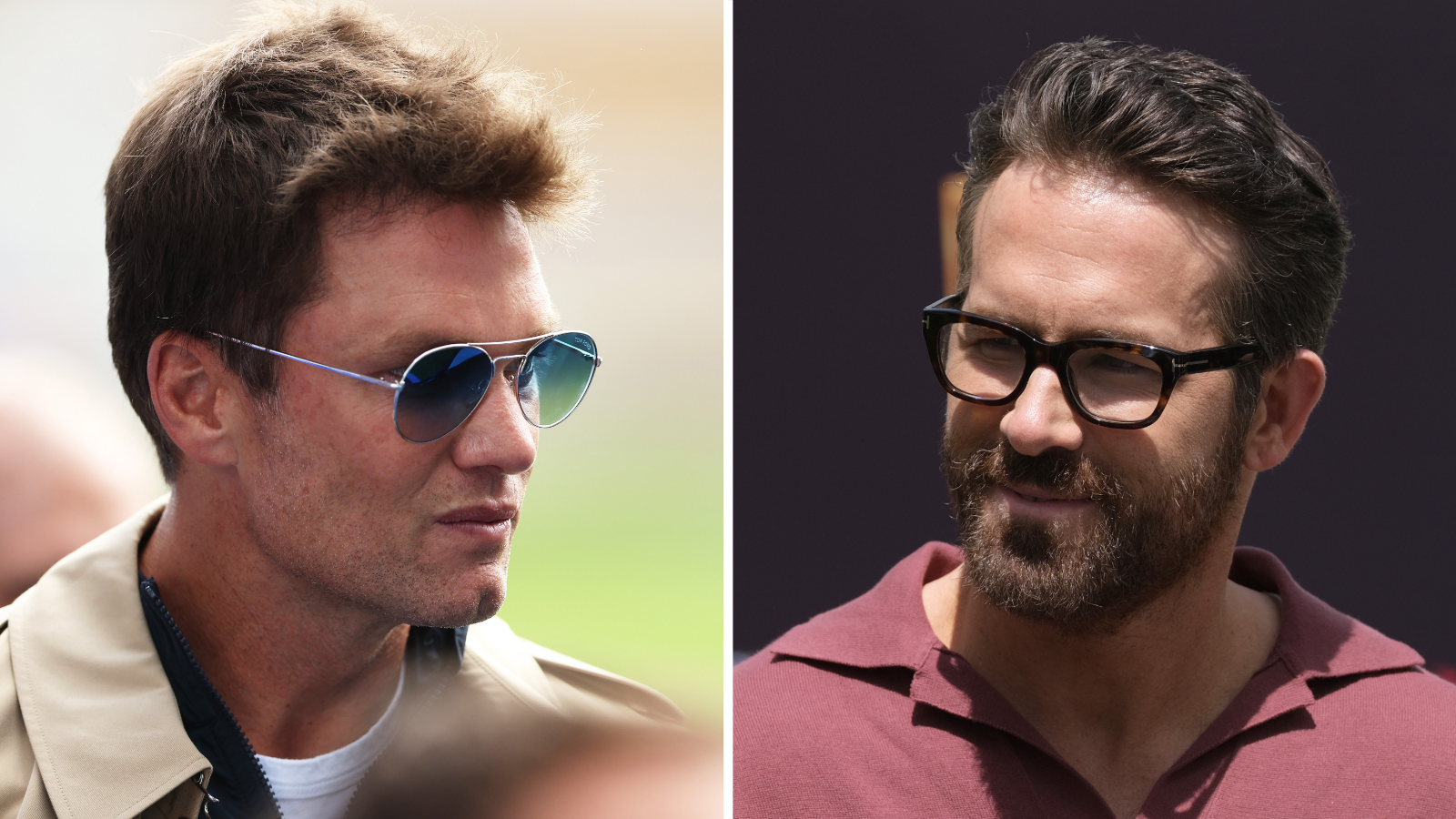
NFL great Tom Brady and actor Ryan Reynolds are the globally recognised faces of respective clubs Birmingham City and Wrexham
The clubs have come from different places.
Wrexham had been in the outside looking up to the Football League when A-lister Reynolds and award-winning American TV actor and producer Rob McElhenney completed their 2021 takeover.
But well before that deal, and the worldwide interest and upward trajectory it brought, the north Wales club were still in the early days in their exile from the elite 92 when League Cup-winners Birmingham were finishing their most recent season in the top flight in 2011.
They meet now with the Blues back down in the third tier for the first time in 29 years and Wrexham returning after 19.
All part of Wrexham’s Hollywood-infused plan, but certainly not in the script for the West Midlanders, subject of their own headlines when Tom Wagner of Knighthead Capital completed their reported £35m buy-out last summer.
That was headline grabbing enough before seven-time Superbowl-winning quarterback Brady came on board as a minority stakeholder.
Since then there has been relegation, but there has been a multi-million pound purchase of a site as part of 60-acre plans for a £2-3bn proposed investment project, where a new 60,000-seater stadium and training ground would sit.
Birmingham CEO Garry Cook on playing Wrexham
This summer alone there has been more than £25m spent on signings, including £10m-plus for Fulham striker Jay Stansfield, a fee bigger than what Reynolds and McElhenney are thought to have put into Wrexham in total over almost four years.
“We’ve not seen spending like this in League One, it’s blitzed the previous history,” admits Kieran Maguire, football finance expert and co-host of the Price of Football podcast.
“But there are similarities in the way Wrexham used the money of their owners to accelerate their way out of National League and League Two, where you can buy your way out of the divisions. Birmingham are just trying to do the same in League One.”
In their most recent accounts, Wrexham’s average wage bill in the National League was £6.9m, higher than the previous year’s average for League One.
To signify the jump even before Knighthead’s involvement, Birmingham’s wage bill for the same 2022-23 period was close to £30m.
Since the US-backed boost, Maguire says: “Birmingham have spent like lottery winners. Rob and Ryan are wealthy, but they’re not a wealth fund.”
So while Birmingham were signing Stansfield, Wrexham were signing 21-year-old Mo Faal for a reported £500,000 from West Bromwich Albion.
It still represented a record-breaking summer in the transfer market for the Dragons, albeit one with a different approach.
“We realised some of the astronomical fees being asked for players were out of what we wanted to spend and what was right for the club at this particular stage,” manager Phil Parkinson has said.
“We wanted good young players who can grow and improve with the club.”
The fight for the US audience
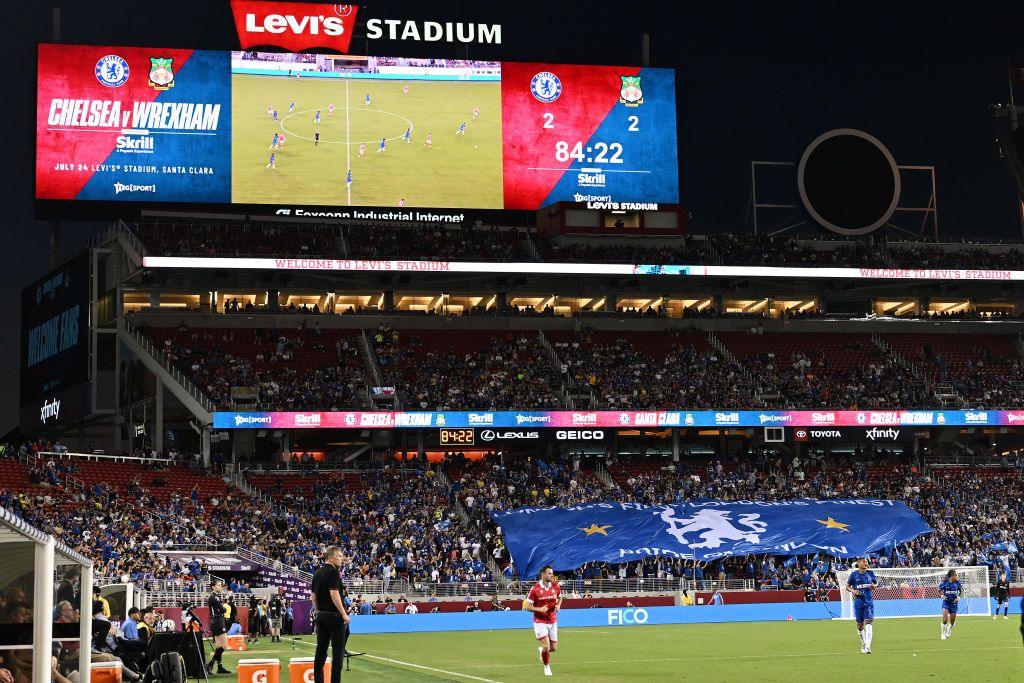
Wrexham's growing North American fan base has been seen during recent high-profile pre-season tours
But not even Birmingham’s buccaneer approach to spending can come without having a plan. In an address to supporters in April, Wagner set out his.
On the back of the stadium plan announcement, the American financier spoke of making Birmingham a globally-recognised brand, with being a named-club in England’s second city part of it.
He even suggested the sponsorship deal with streetwear firm Undefeated was with this in mind, saying: “You go to New York City, you go to LA (Los Angeles), you will see people wearing Birmingham City kit on the street.
"I don’t really think they know what they’re wearing but they will. We don’t want to draw too much attention to it yet but they’ll figure it out.”
The problem for Birmingham is that North American fans already know they are wearing Wrexham, the documentary darlings of the world game.
Exact replica sales are difficult to pin down, but Wrexham’s merchandise and retail was their biggest driver, accounting for a third of their income in 2022-23, while their revenue from outside of Europe was almost a quarter of turnover.
All that before sell-out summer tours to the US and Canada where officials from Chelsea were said to be casting envious eyes at the fan base being established and genuinely competing with Premier League names.
Perhaps that is why it was reportedly floated in the summer to stage Monday's fixture in the US, a notion shot down by Reynolds.
“I often look back over the trends and the metrics, and some weekends Wrexham are just as popular as Premier League matches and certainly there’s more publicity than the big MLS (Major League Soccer) teams,” says Chris Harris, editor of US-based WorldSoccerTalk, who says only Lionel Messi’s Inter Miami can similarly compete.
“Do not underestimate it - you can see through social media there are a lot of people who are Wrexham fans, and not just passing, but on top of the new signings, what’s going on at the club.
"They are following a club like Wrexham just as easily and as much as they would follow Manchester City or Chelsea.”
It is a support that could be super-charged further with the EFL’s US TV deal with CBS, with an increase in the number and the ease in which games outside the Premier League can be viewed.
So far this season, Wrexham have been a featured game nine times – more than any of the recent Premier League clubs or giants in the divisions below the top flight such as Leeds United. Only one Wrexham fixture, league or cup, has not been available through either cable network or streaming.
No surprise considering the press release to announce the deal mentions Wrexham in its headline, and the promotional poster for the coverage comes with Wrexham striker Paul Mullin as the central image.
“The CBS deal is the Wrexham effect,” says Harris. “Their popularity, through the documentary, would have been a major reason why they came in hard to get the rights.”
No Brady bump for Blues
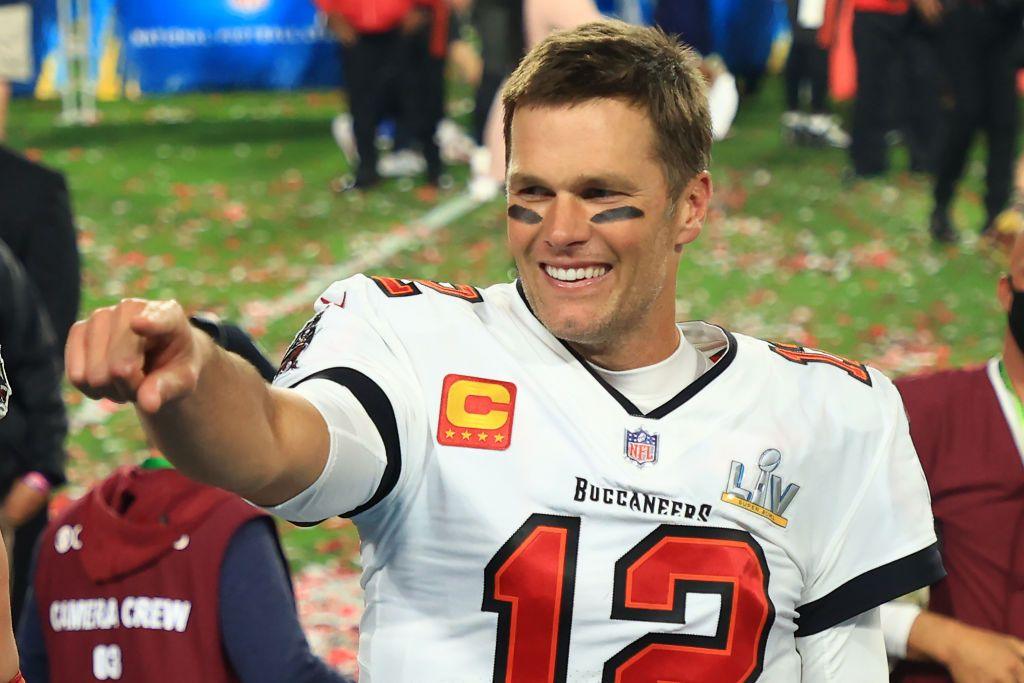
Tom Brady - a three-time NFL MVP - chairs an advisory board at Birmingham
There is no Brady effect, not yet anyway.
According to Harris, the US audience may be conscious of his investment, but it has not registered in the same way Wrexham’s Hollywood connection had.
“We’re into college football and NFL where he’s on television as a co-commentator, so there’s been very little mention of it in the media,” he says.
“They’re missing a Welcome to Birmingham.”
And also a greater connection. Reynolds and McElhenney’s smart use of social media has kept the market going even when the Welcome to Wrexham documentary is between seasons.
Birmingham’s naming-rights deal for their stadium is tied to social media impressions, but Wrexham are far ahead in that field. The Welsh side have four time as many Instagram followers, double the YouTube subscribers, while their former sponsorship deal with TikTok has their account beyond the million mark.
Those last accounts carried detail of an agreement that the co-owners are free to utilise the club’s intellectual property, with the club in turn given a licence to use Reynolds’ and McElhenney’s image for commercial reasons. The platform to really ramp up revenue is there.
Even if Brady did utilise his profile, it is dwarfed by that of Reynolds. On X - formerly known as Twitter - it is 21m plays 3m.
“Birmingham haven’t been able to market Brady much, if at all,” says Harris. “People are not making the connection, whereas with Rob and Ryan, even if they are busy and missing matches, you still have that drive whether through social media, clever partnerships.
“And with the documentary selling itself, it reaches a whole new audience for those partners and for the club, maybe not football fans. It’s calculated, they are smart business people, because the reality of this is Wrexham are a small club without the facilities. Birmingham are the opposite.”
Big stadiums, big ambition, big challenges
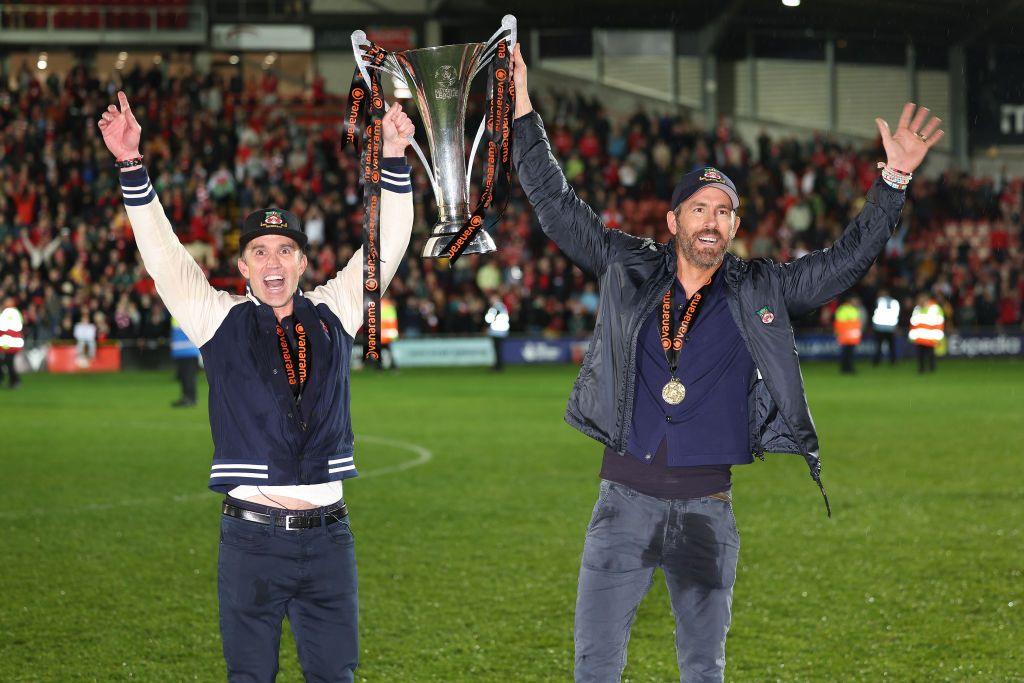
Wrexham have achieved back-to-back promotions under Ryan Reynolds and Rob McElhenney's ownership to return to League One for the first time since 2005
Birmingham and Wrexham are ahead of each other in different areas and to where they want to be. Ready money against marketing, resources against reach.
Wagner has not been afraid of being bold and loud with ambitions, supporting manager Chris Davies to a point that few are expecting the Blues not to return to the second tier.
The plan is to be in the Premier League within five, with a similar timeframe given for the new stadium, something that could create a sustainability and ability to compete.
Sustainable has been Wrexham’s watch-word to this point, spending offset by sponsorship deals from big US companies such as United Airlines and HP, attracted by the documentary’s cross-platform appeal.
But currently, while Birmingham have been ready and able to flex financial muscles at this level, Wrexham are playing catch-up on that front for the first time since the takeover, with club officials admitting there is a need for infrastructure and the off-field organisation to keep pace with the club’s rise.
“It’s if they go to the Championship where the jump is much bigger,” warns Maguire. “With the size of the clubs and the resources, including those coming down from the Premier League, it’s a completely different business with average losses around £400,000-a-week.”
Challenges face both: greater profit and sustainability rules await in the Championship, and can Wrexham’s documentary appeal continue if things begin to plateau on the pitch?
Regardless, at Wrexham a £20m new Kop is still in the planning and McElhenney’s talk of boosting the stadium to 50,000 may not be as fanciful as it might appear - especially with the possibility of the showbiz pair and the clever profile created making Wrexham an obviously attractive investment.
So what price an expanded Racecourse or a new St Andrew’s hosting this third-tier fixture in the top flight soon enough? Time will tell, but it is already clear the American dreams of these clubs’ owners will go far beyond Monday’s match.
Related topics
- Published13 September 2024

- Published12 September 2024
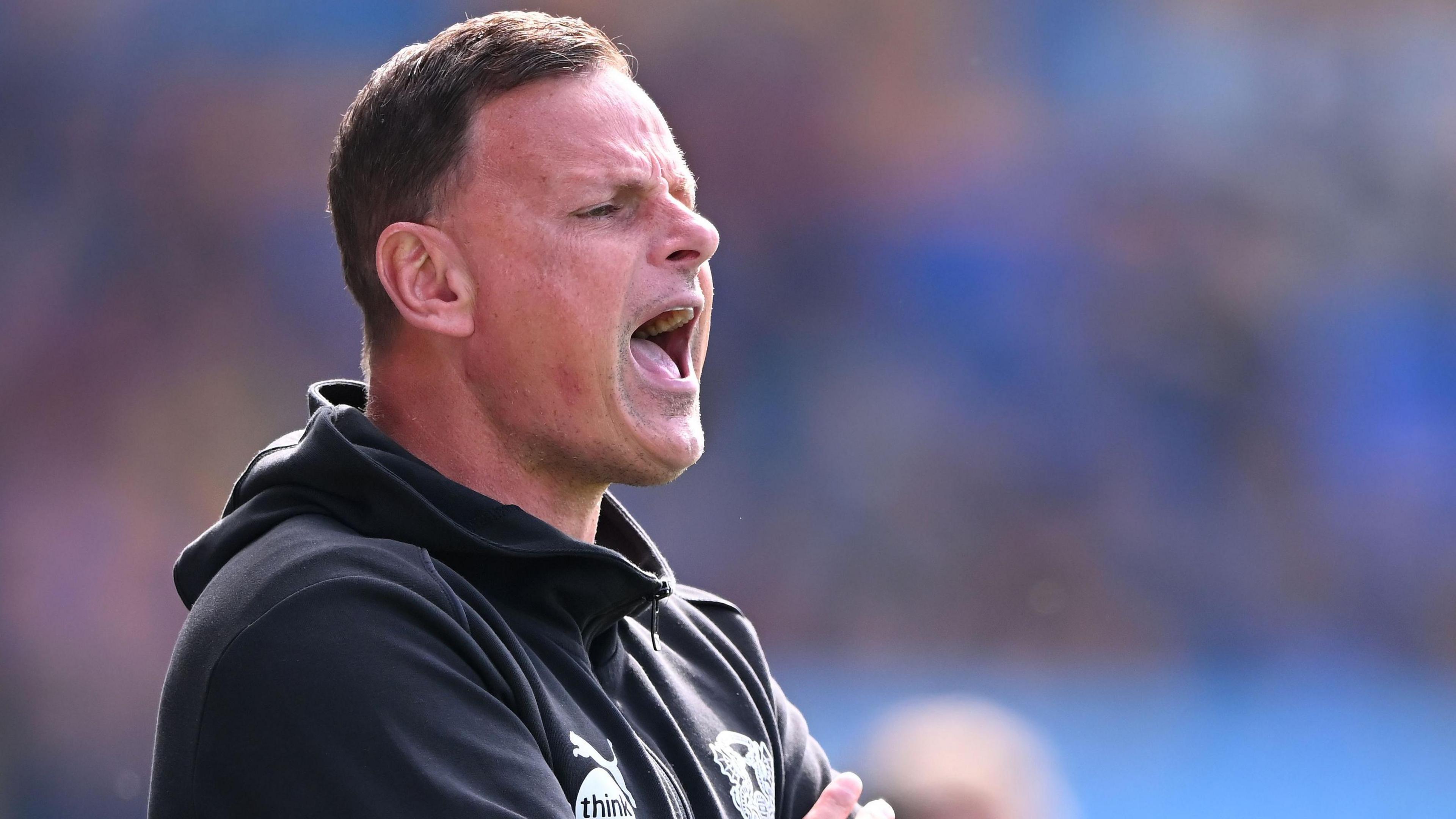
- Published9 February 2024
